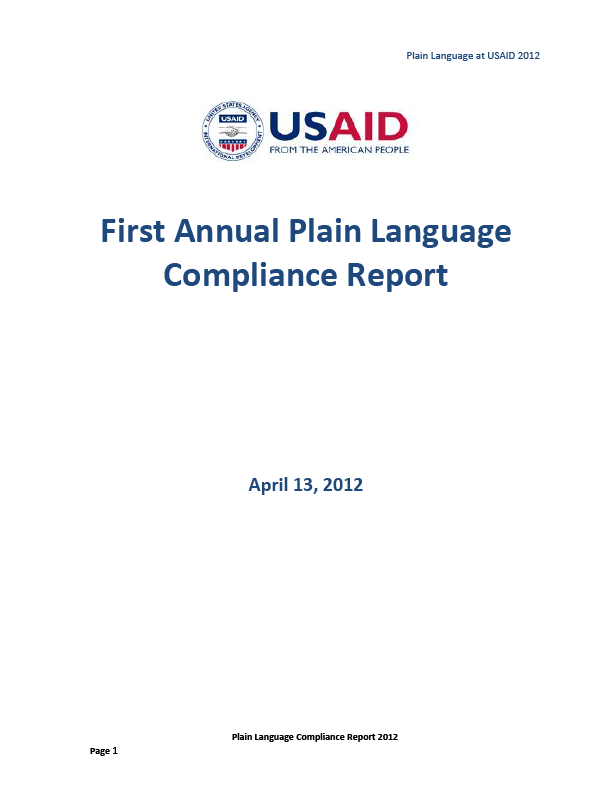Speeches Shim
On October 13, 2010, President Obama signed the Plain Writing Act of 2010 (the Act) into law. 1 The purpose of the Act is to make federal documents easy to understand and use. The Act requires federal agencies to write all publicly distributed documents, including publications, letters, forms, notices, and instructions, in a "clear, concise, well-organized" manner using the principles of plain language.
First Annual Plain Language Compliance Report - 2012 ![]() (pdf - 340k)
(pdf - 340k)
In April 2011, the Office of Management and Budget (OMB) issued final guidance on implementing Plain Writing Act requirements that included deliverables and deadlines. The Agency for International Development (USAID) met both the July 13, 2011 and October 13, 2011 commitments by:
- Designating a senior official
- Creating a webpage
- Publishing an implementation report
- Using plain writing when issuing communications covered under the Act
OMB’s guidance also required agencies to submit a compliance report by April 13, 2012. This, our first annual compliance report, outlines the projects USAID has implemented -- and will continue to support -- to improve communications that will enhance the work we do. USAID is working hard to ensure that we effectively communicate our work in global development to save lives and improve human welfare around the world. Ensuring the principles of plain language are embedded in our daily operations is a critical step in this process.
USAID strongly embraces the principles of transparency and openness expressed in the Plain Writing Act. Requiring federal agencies to use “clear Government communication that the public can understand and use" will also promote the goals of the Administration's Open Government Initiative. Plain writing is indispensable to achieving the President’s Open Government goals and improving government transparency, public participation, and collaboration with stakeholders and the American public.


Comment
Make a general inquiry or suggest an improvement.